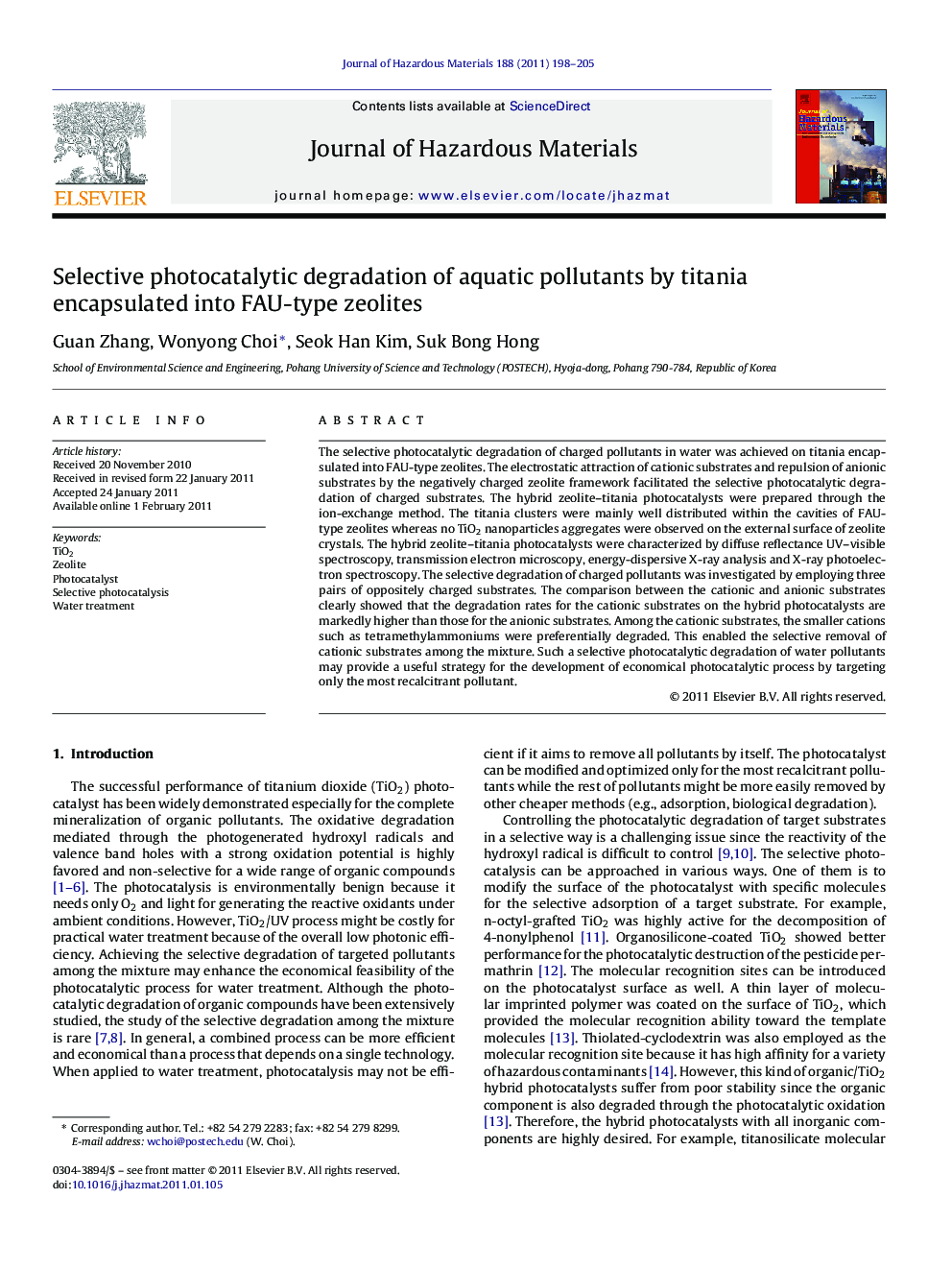| Article ID | Journal | Published Year | Pages | File Type |
|---|---|---|---|---|
| 579619 | Journal of Hazardous Materials | 2011 | 8 Pages |
Abstract
The selective photocatalytic degradation of charged pollutants in water was achieved on titania encapsulated into FAU-type zeolites. The electrostatic attraction of cationic substrates and repulsion of anionic substrates by the negatively charged zeolite framework facilitated the selective photocatalytic degradation of charged substrates. The hybrid zeolite-titania photocatalysts were prepared through the ion-exchange method. The titania clusters were mainly well distributed within the cavities of FAU-type zeolites whereas no TiO2 nanoparticles aggregates were observed on the external surface of zeolite crystals. The hybrid zeolite-titania photocatalysts were characterized by diffuse reflectance UV-visible spectroscopy, transmission electron microscopy, energy-dispersive X-ray analysis and X-ray photoelectron spectroscopy. The selective degradation of charged pollutants was investigated by employing three pairs of oppositely charged substrates. The comparison between the cationic and anionic substrates clearly showed that the degradation rates for the cationic substrates on the hybrid photocatalysts are markedly higher than those for the anionic substrates. Among the cationic substrates, the smaller cations such as tetramethylammoniums were preferentially degraded. This enabled the selective removal of cationic substrates among the mixture. Such a selective photocatalytic degradation of water pollutants may provide a useful strategy for the development of economical photocatalytic process by targeting only the most recalcitrant pollutant.
Related Topics
Physical Sciences and Engineering
Chemical Engineering
Chemical Health and Safety
Authors
Guan Zhang, Wonyong Choi, Seok Han Kim, Suk Bong Hong,
